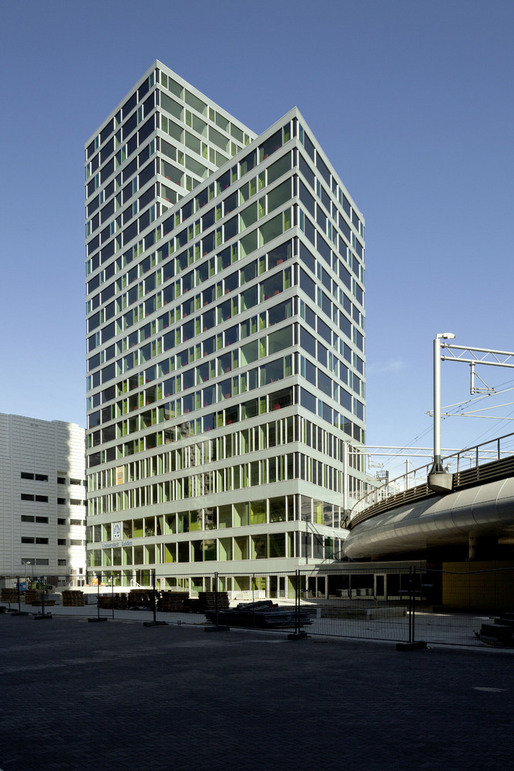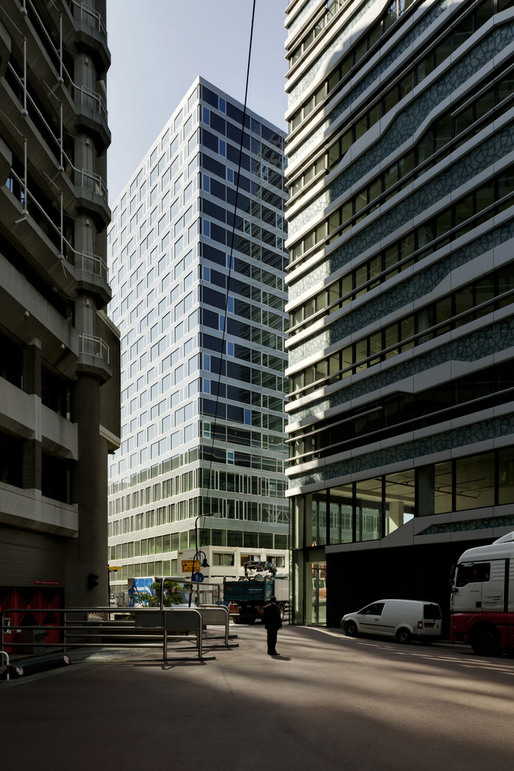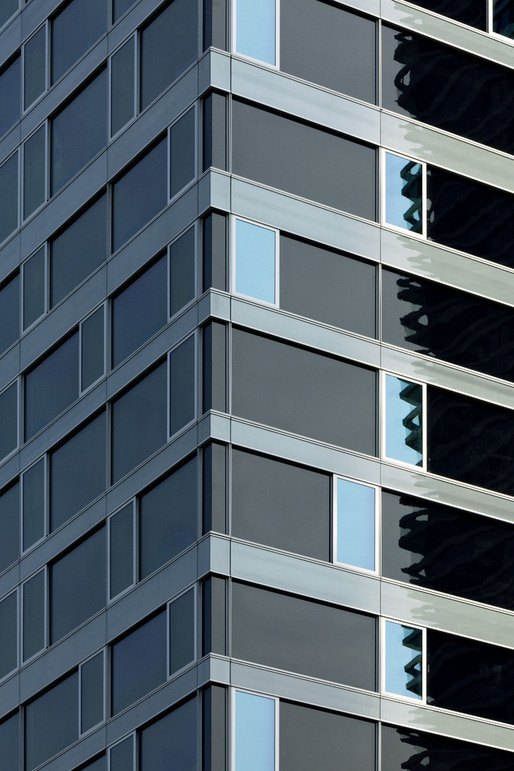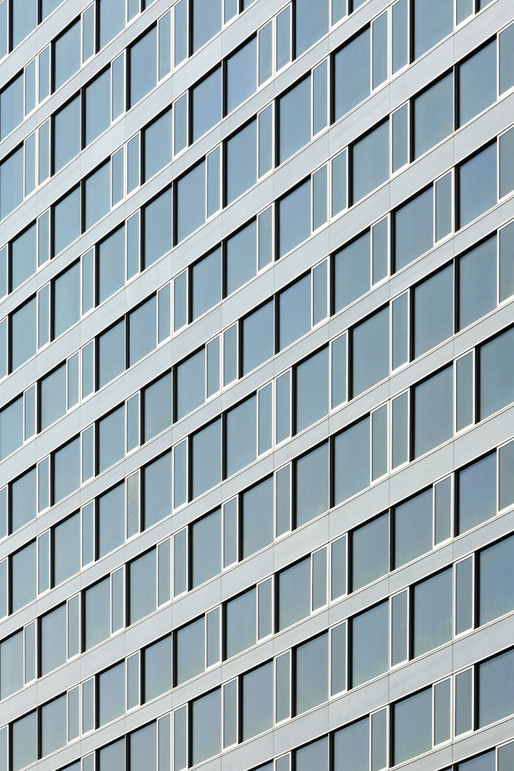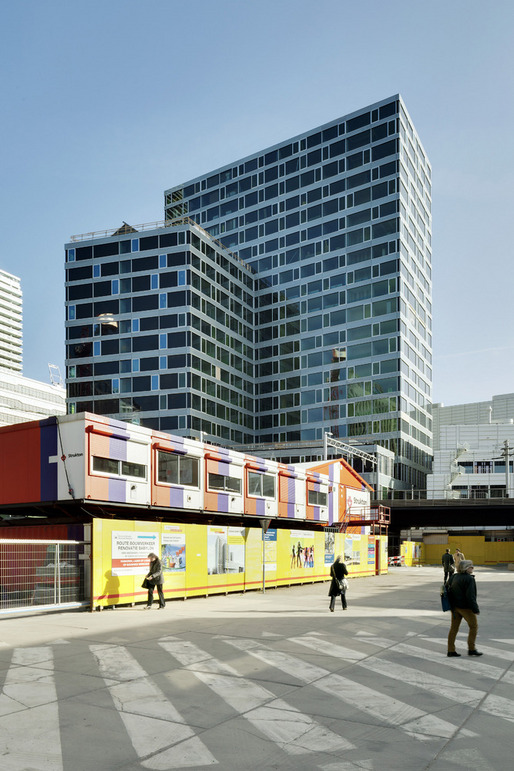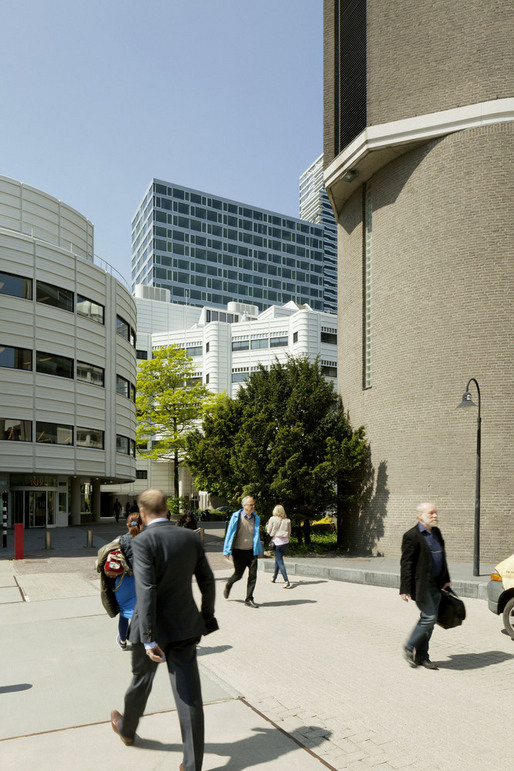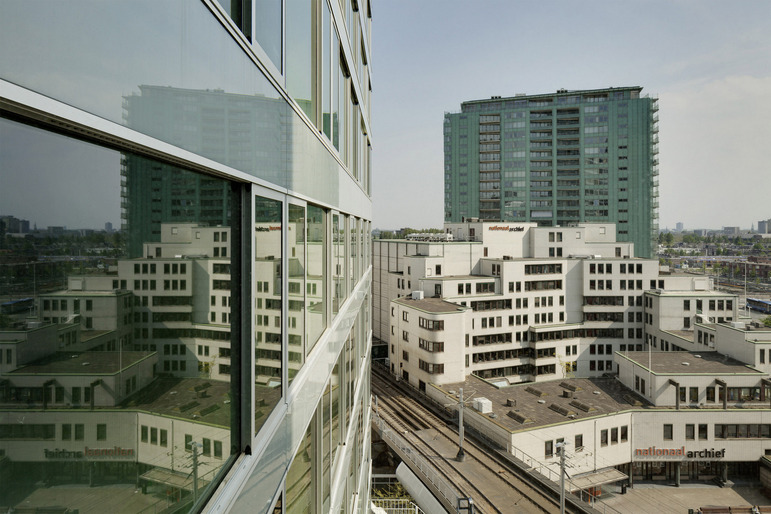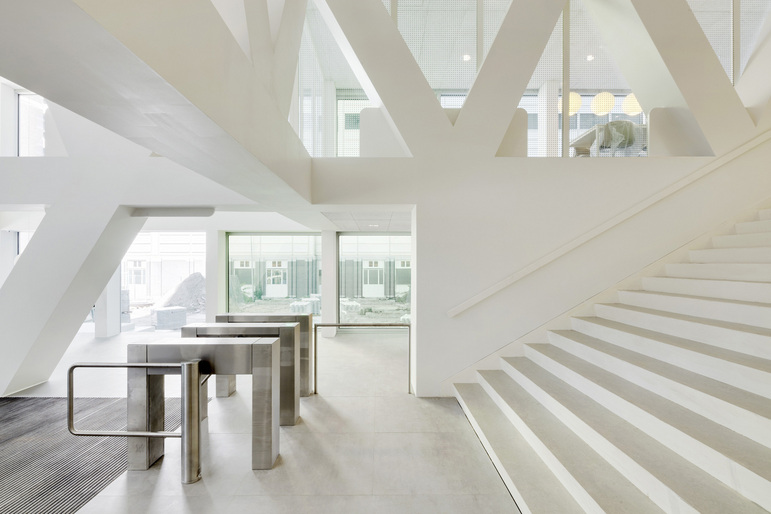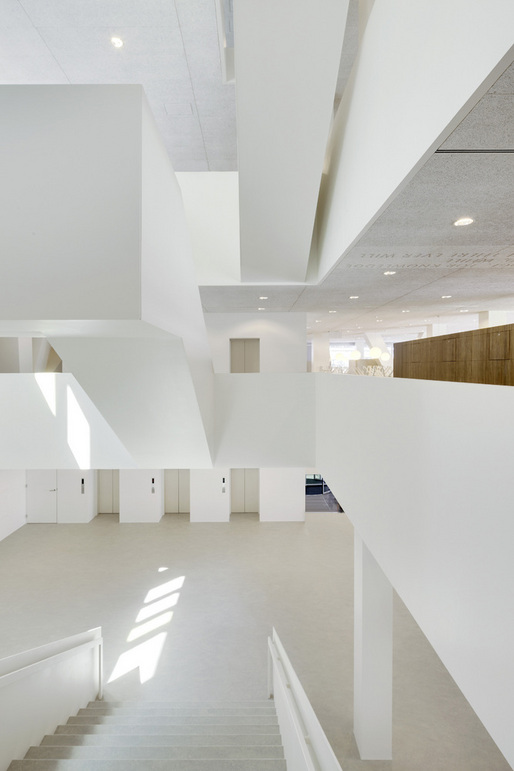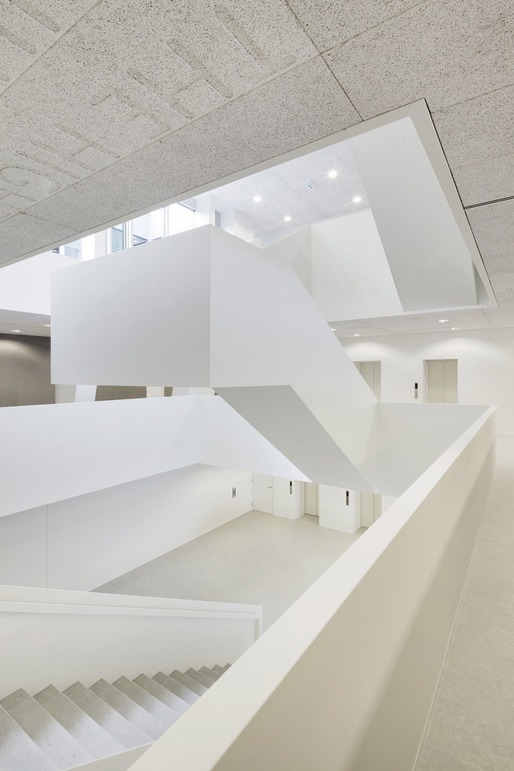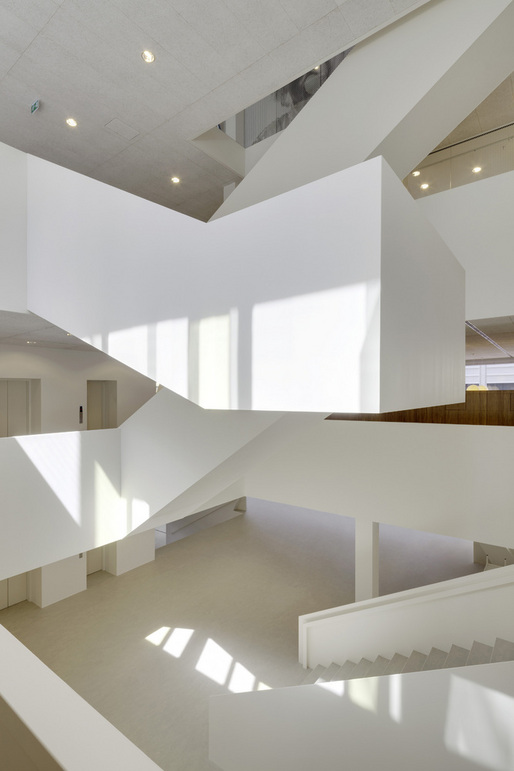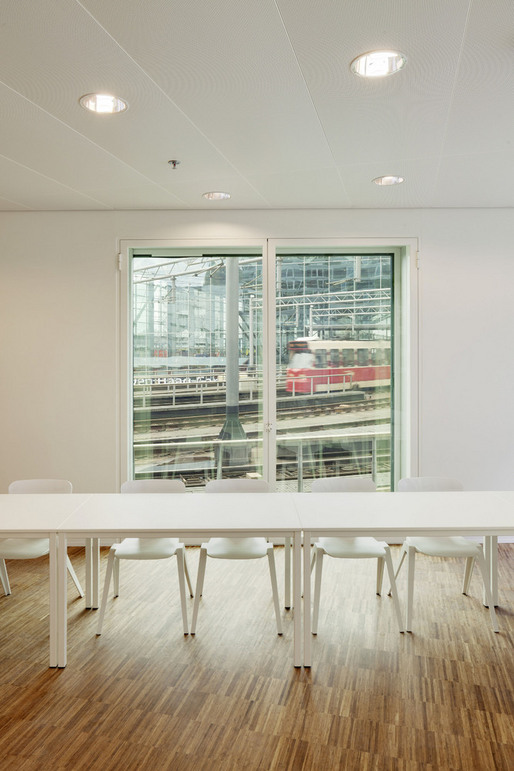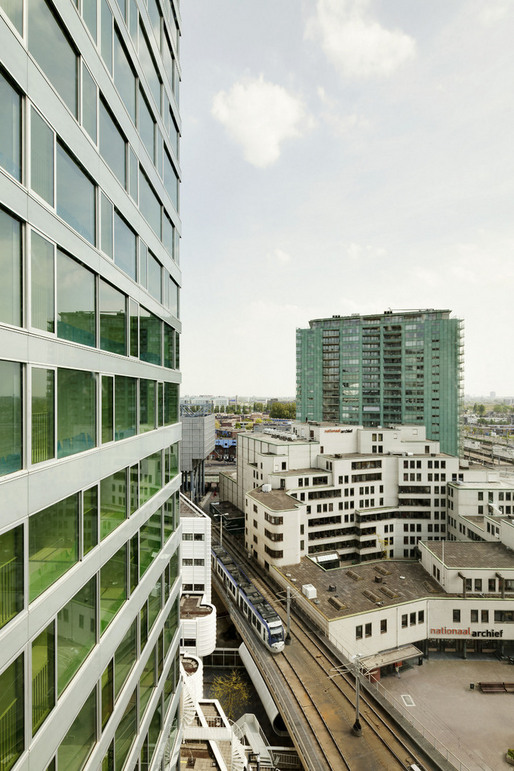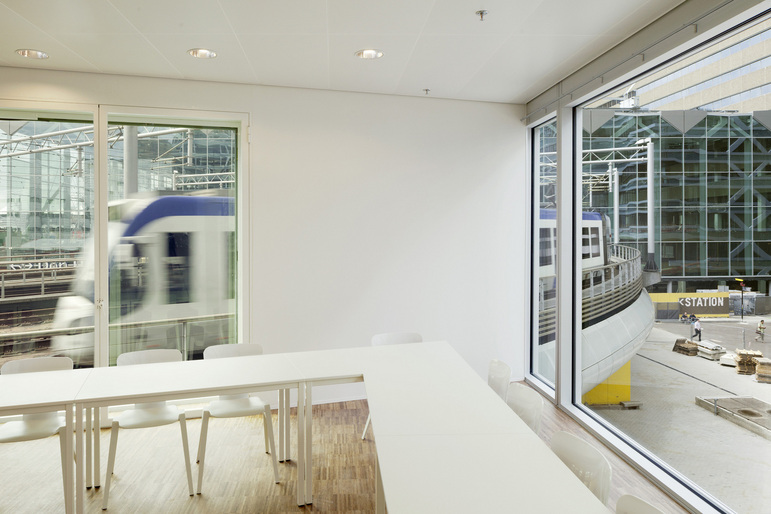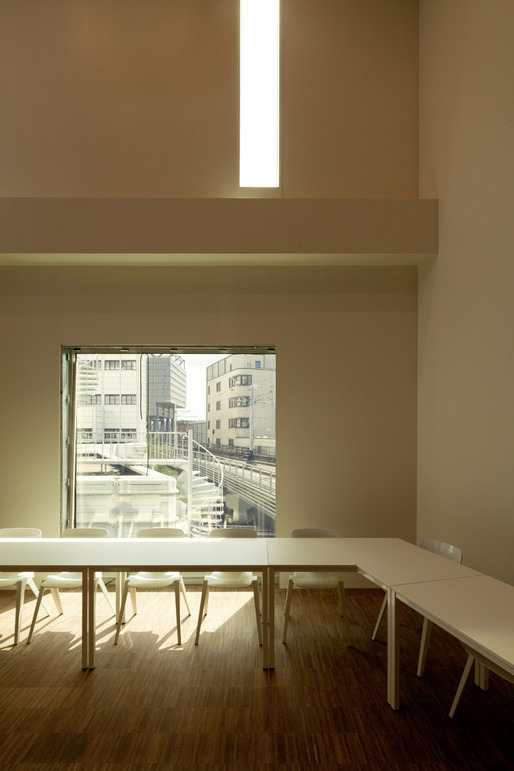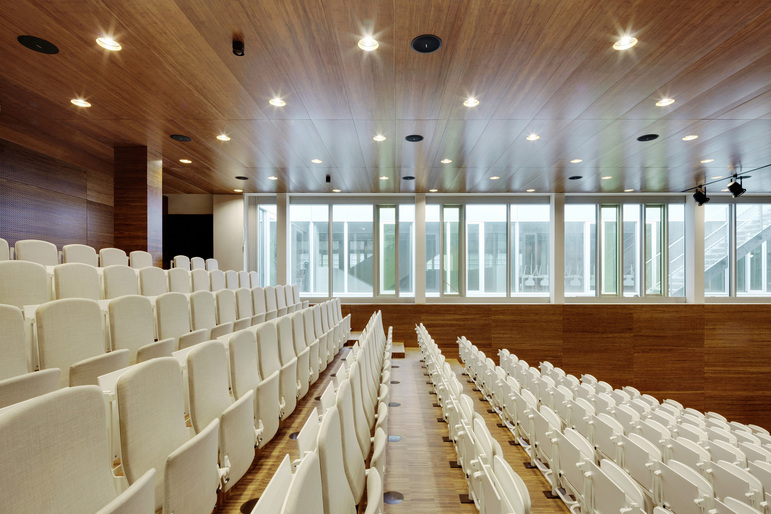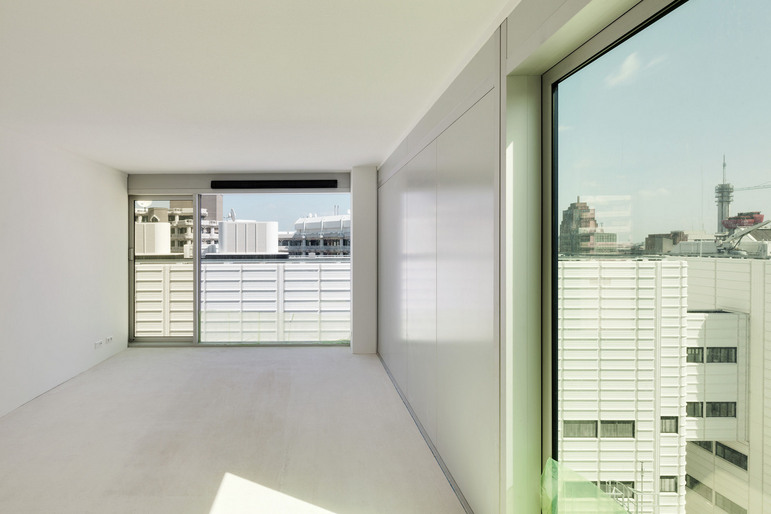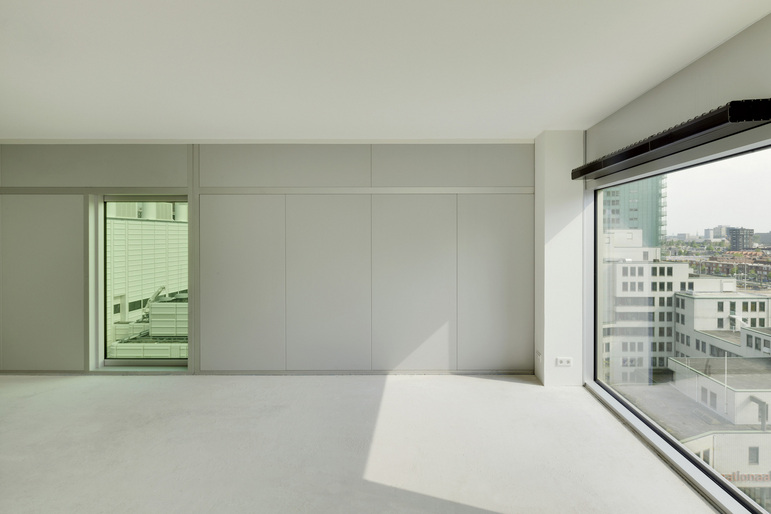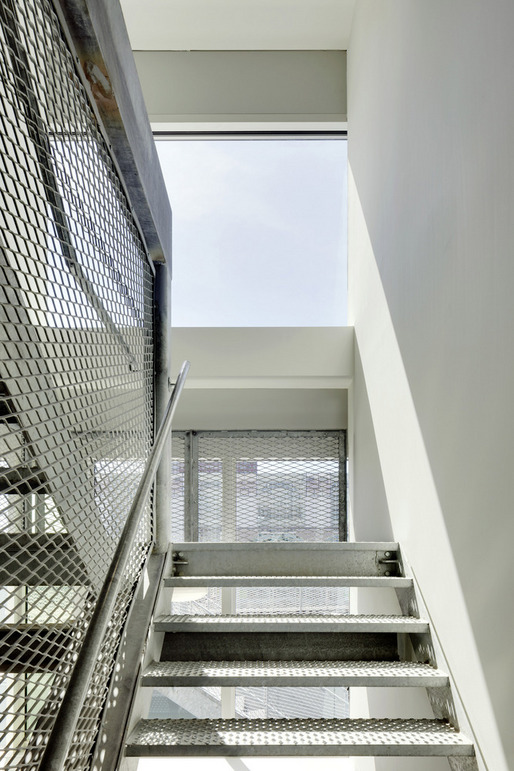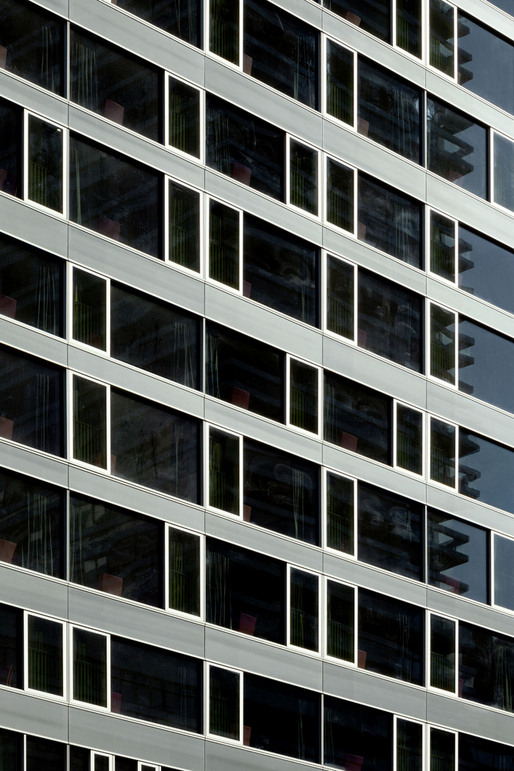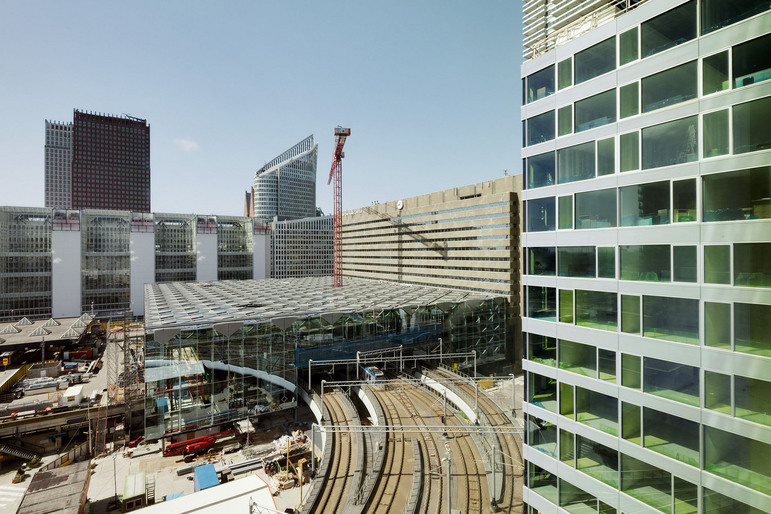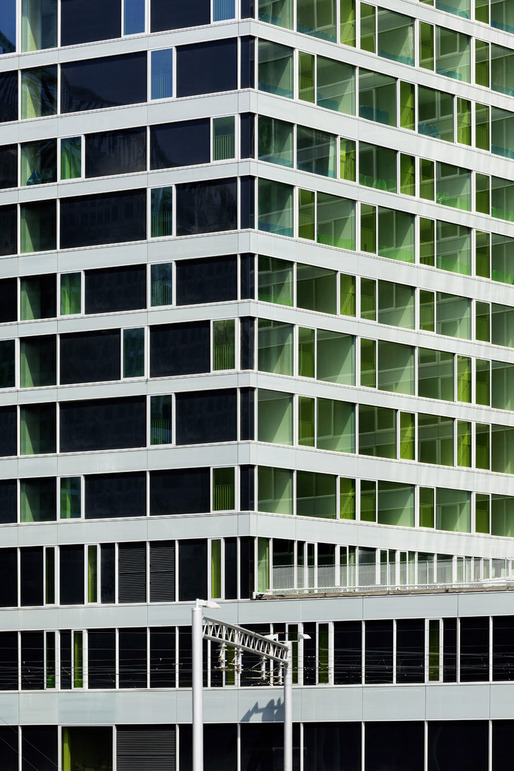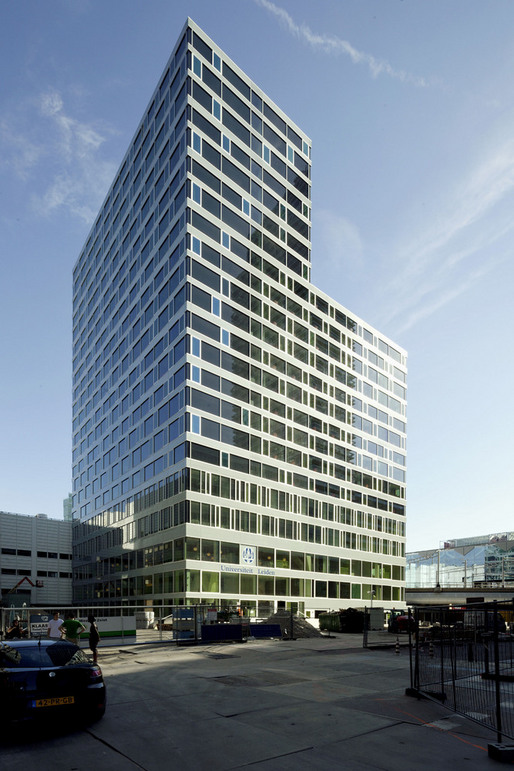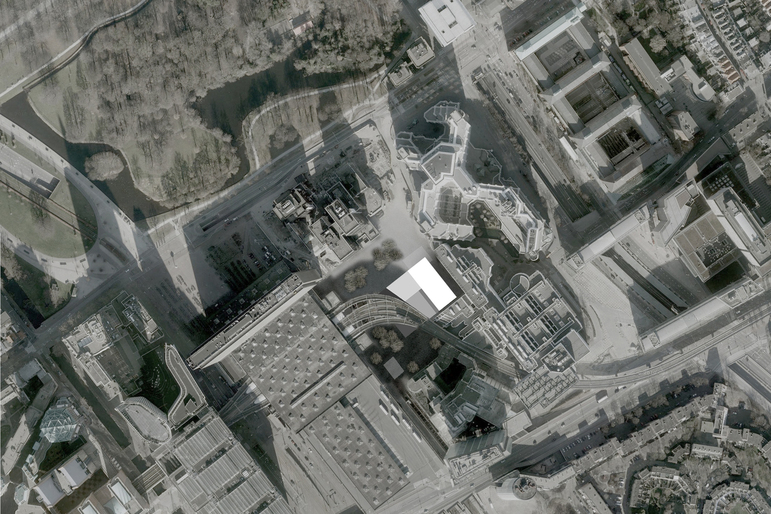AvB Tower
The AvB Tower is a hyper-hybrid academic building and a dynamic hub threading The Hague’s central train station to the adjacent urban envelope, accommodating students and faculty with a program of housing, retail, offices, lecture halls, and dining spaces. Surrounded by an expansive and newly constructed pedestrian square–the Anna van Beurenplein–this 72m steel tower is foreseen to be a catalyst for further redevelopment of this centrally sited urban space. As the city’s train station is a terminus, this square is a point of convergence for multiple modes of transportation and a gathering space for the tower’s 396 student residents. Next to the trains, the city’s main bus and tram terminals are also connected to the station, making this the most trafficked area of The Hague. The building is an outpost of Leiden University. The tower is 21 stores tall, with the first four floors dedicated to the supporting spaces, with the studio apartments located above–which students of the three year program housed in the building are required to live in during their first two years of study.
Clusters of office buildings and a surface parking lot were demolished to create this new residential and academic situation, which is part of a larger master plan to restructure this formerly under-utilized space in the center of this stately city. A newly submerged 3-story parking garage serves as the plinth for the tower’s foundation, dictating its structural solutions due to the pre-existing weight limitations of the parking garage. It was therefore chosen to construct the tower in steel, distributing its structural load across 11 pre-determined columns. While not unheard of, this type of construction is rather uncommon in the Netherlands, as most buildings in the country rest of a foundation of piles that have been driven into the ground, in order to stabilize itself on an otherwise sandy, soft soil. An interior material palette of wooden walls in the lecture hall, and otherwise white walls throughout the rest of the building, make the building a quiet environment, so as not to distract from the concentration required for academic study of global affairs.
Carving an extension of its lobby from the surrounding square, the tower is accessed via an entryway of stairs and ramps, which also provides access to the building for those with disabilities. Upon entry to the building’s lobby, huge trusses are present, indicating the structure of the building, and, due to their size, denote the scale of the load that they carry. A sculptural staircase, whose oversized landings encourage informal social exchange, welcomes users upon entry, propelling them up and into the building’s hybrid programming. This staircase traverses a central void, organizing and intuitively routing users to and from the complex program of academic facilities that constitute the tower’s first five floors. The staircases hang from the structure and do not touch the ground, and are composed of steel painted white. The ground floor contains retail and auditoriums, while the second through fifth house lecture halls, a student help desk, and university offices, with 396 student studios occupying the tower’s remaining floors.
Integrated within a central ‘district heating’ system purposely built for this redeveloped area, the tower utilizes excess energy provided by an adjacent residential building to satisfy its heating and cooling demands. Students in the individual studios are also able to regulate their heating individually. There are two types of studio: individual studio of about 26 m2, with individual kitchens and bathrooms, and another of about 36 m2, which included a shared kitchen and bathroom. A sprawling roof terrace on the fourth floor is used during the summers for gatherings such as student barbecues. The tower’s office spaces have been outfitted with independently regulated heating and cooling systems, while student rooms feature floor heating and operable and oversized sliding glass yellow windows, providing views to the square below, the skyline of The Hague, and the North Sea and horizon beyond.
Location
Anna van Buerenplein
2595 BE The Hague
the Netherlands
Typology
Housing, Retail, School
Size
24.500 m2
Date of design
2010-2012
Date of completion
2013
Project team
Wiel Arets, Rob Willemse, Joost Körver, Raymond van Sabben, Thorsten Schneider, Jelle Homburg, Jochem Homminga
Collaborators
Janosch Welzien, Ramon Alverez Roa, Martin Tessarz, Tobias Bamberg, Steffen Winkler, Carlatta Giacomin, Itziar Quiros
Client
Anna van Buerenplein BV
Owner
Green College Court BV
Occupant
University of Leiden
Interior
Studio RTM
Consultants
DGMR Raadgevende Ingenieurs BV, Van Rossum Raadgevende Ingenieurs BV, Wessels Zeist BV
